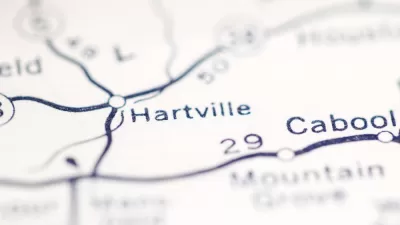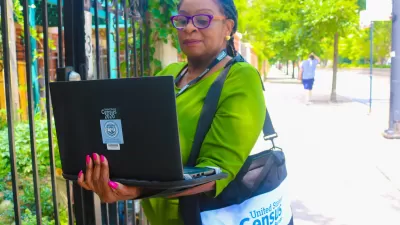In many cities, people are living in places that are hard to locate. But accurate census counts are crucial to ensuring cities get their fair share of political power and funding.

Emily Badger reports on concerns about undercounting in the 2020 census and the importance of capturing the right numbers. The problems are particularly acute in places with immigrant communities and large numbers of relocated residents, such as New York and California. Locating residents living in converted garages or temporary housing situations can be challenging since these units are often unmarked or hidden.
"Cities must find all these households before they even get to the second challenge: persuading the people who live in them, many of them immigrants, to participate in the census," says Badger. Residents fearful of immigration raids and deportation are harder to reach and less inclined to speak with census workers.
But accurate counts are essential since federal funding and access to resources are tied to population numbers. “City officials [in San Jose, California,] believe the 2010 count of 945,942 residents missed as many as 70,000 residents, costing the city about $20 million annually in lost resources,” notes Badger.
FULL STORY: Extra Doorbells, Satellite Dishes: How Cities Search for People the Census May Miss

Maui's Vacation Rental Debate Turns Ugly
Verbal attacks, misinformation campaigns and fistfights plague a high-stakes debate to convert thousands of vacation rentals into long-term housing.

Planetizen Federal Action Tracker
A weekly monitor of how Trump’s orders and actions are impacting planners and planning in America.

In Urban Planning, AI Prompting Could be the New Design Thinking
Creativity has long been key to great urban design. What if we see AI as our new creative partner?

King County Supportive Housing Program Offers Hope for Unhoused Residents
The county is taking a ‘Housing First’ approach that prioritizes getting people into housing, then offering wraparound supportive services.

Researchers Use AI to Get Clearer Picture of US Housing
Analysts are using artificial intelligence to supercharge their research by allowing them to comb through data faster. Though these AI tools can be error prone, they save time and housing researchers are optimistic about the future.

Making Shared Micromobility More Inclusive
Cities and shared mobility system operators can do more to include people with disabilities in planning and operations, per a new report.
Urban Design for Planners 1: Software Tools
This six-course series explores essential urban design concepts using open source software and equips planners with the tools they need to participate fully in the urban design process.
Planning for Universal Design
Learn the tools for implementing Universal Design in planning regulations.
planning NEXT
Appalachian Highlands Housing Partners
Mpact (founded as Rail~Volution)
City of Camden Redevelopment Agency
City of Astoria
City of Portland
City of Laramie





























